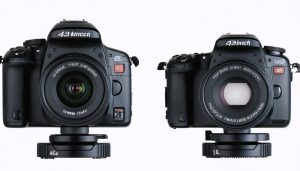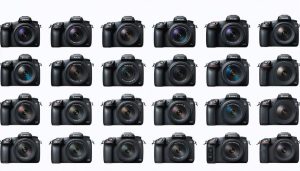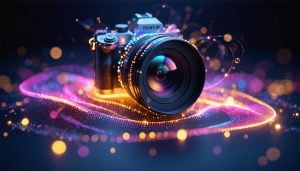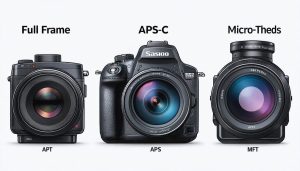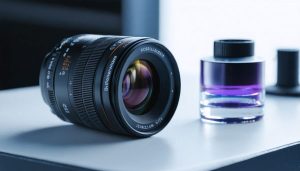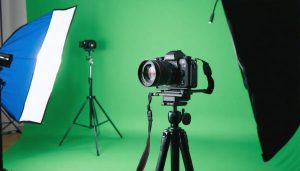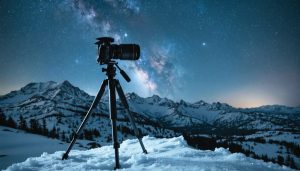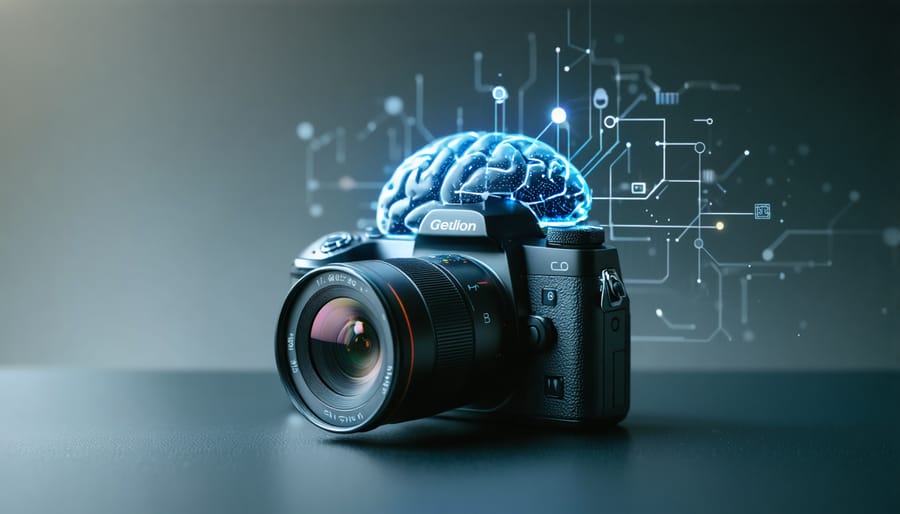
Artificial Intelligence has fundamentally transformed how modern camera sensors capture and process images, ushering in a new era of computational photography that was unimaginable just a decade ago. Today’s AI-powered cameras don’t just see scenes; they understand them, analyzing countless data points in real-time to make split-second decisions about focus, exposure, and composition. From instantly recognizing and tracking subjects across complex scenes to adjusting settings before you even press the shutter, these intelligent systems are redefining what’s possible in both professional photography and everyday snapshots.
The technology’s impact extends far beyond simple autofocus improvements, incorporating sophisticated scene recognition, real-time subject tracking, and predictive analysis that anticipates subject movement. For photographers, this means capturing previously impossible shots with unprecedented precision, while casual users benefit from professional-quality results without technical expertise. As these systems continue to evolve, they’re not just making photography easier – they’re expanding the boundaries of creative expression and technical possibility in ways that challenge our traditional understanding of what cameras can do.
This revolution in imaging technology represents a fundamental shift in how we approach photography, merging artistic vision with computational power to create a new standard for image capture and processing.
How AI-Powered Autofocus Works
Traditional vs. AI Autofocus
Traditional autofocus systems rely on two main methods: phase-detection, which measures light patterns to determine focus position, and contrast-detection, which analyzes image contrast to achieve sharp focus. While these systems have served photographers well for decades, they can struggle in challenging conditions like low light or fast-moving subjects.
Enter AI-powered autofocus, which represents a significant leap forward in focusing technology. Unlike traditional systems that rely solely on contrast or phase differences, AI autofocus uses deep learning algorithms trained on millions of images to recognize and track subjects. This means it can identify specific elements like eyes, faces, or animals, and maintain focus even when subjects move unpredictably.
The difference becomes particularly apparent in real-world scenarios. Where a traditional system might hunt back and forth trying to lock onto a bird in flight, AI autofocus can instantly recognize the bird, predict its movement pattern, and maintain sharp focus throughout the sequence. In low-light conditions, AI systems can detect subtle patterns and maintain focus where conventional methods might fail entirely.
However, traditional systems still have their place, particularly in situations where predictability and reliability are more important than sophisticated subject recognition. They’re often faster in simple focusing scenarios and consume less battery power. The ideal modern camera combines both approaches, using AI to enhance rather than replace conventional autofocus methods.
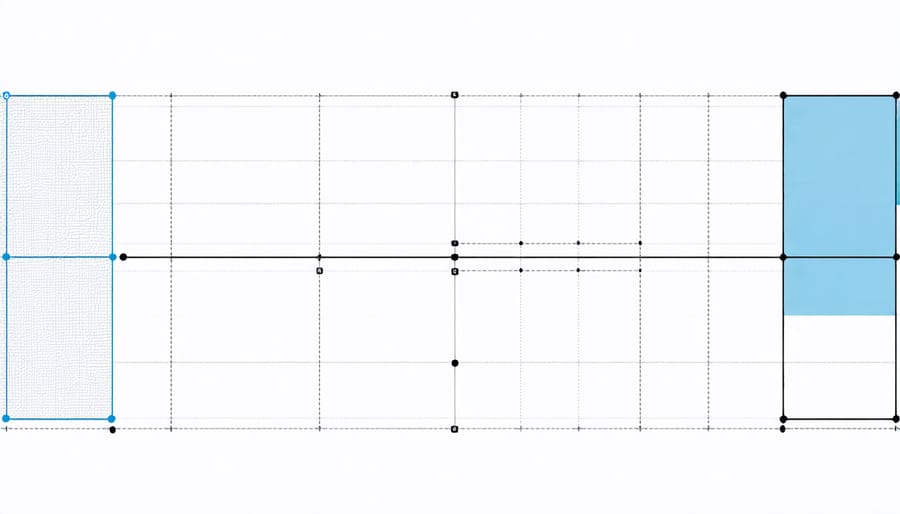
Deep Learning in Camera Systems
Deep learning has revolutionized how modern cameras understand and interact with scenes, particularly in autofocus systems. At the heart of this technology are convolutional neural networks (CNNs) that work alongside traditional camera sensor technology to deliver unprecedented focusing accuracy.
These neural networks are trained on millions of images, learning to recognize not just faces and eyes, but also complex patterns, shapes, and movement. Imagine having a highly skilled assistant who can instantly identify and track subjects across your frame – that’s essentially what deep learning provides in modern camera systems.
The process happens in milliseconds: the camera analyzes the scene, identifies subjects, predicts movement patterns, and adjusts focus accordingly. For wildlife photographers, this means keeping sharp focus on a bird in flight, even as it weaves through branches. For portrait photographers, the system can maintain focus on a subject’s eye even when they’re turning their head or moving unpredictably.
What makes this technology particularly impressive is its ability to learn and improve. Camera manufacturers regularly update their AI algorithms, enabling the systems to recognize new subjects and handle increasingly complex scenarios. This continuous learning process means your camera becomes more capable over time, adapting to various shooting situations with growing sophistication.
Key Features of AI Autofocus
Subject Recognition and Tracking
Modern AI-powered cameras have revolutionized subject recognition and tracking through sophisticated deep learning algorithms. These systems can instantly identify and lock onto various subjects, from human faces and bodies to animals and vehicles, making it easier than ever to capture sharp, well-focused images of moving subjects.
The technology works by analyzing thousands of reference images to learn distinct patterns and characteristics. For instance, when tracking humans, the camera’s AI can recognize not just faces but also eyes, head shapes, and body postures. This enables advanced tracking capabilities even when subjects turn away from the camera or become partially obscured.
What’s particularly impressive is how these systems can maintain focus on specific subjects in challenging conditions. Wildlife photographers benefit from AI’s ability to distinguish between different animal species and maintain focus even in dense foliage. Sports photographers can rely on the camera to track athletes through complex movements while maintaining precise focus on key areas like faces or jersey numbers.
The system’s real-time processing means it can predict subject movement and adjust focus accordingly, significantly reducing the likelihood of missed shots. Whether you’re capturing a child’s first steps or tracking a race car at high speeds, AI subject recognition ensures your subject remains crisp and in focus throughout the entire sequence.
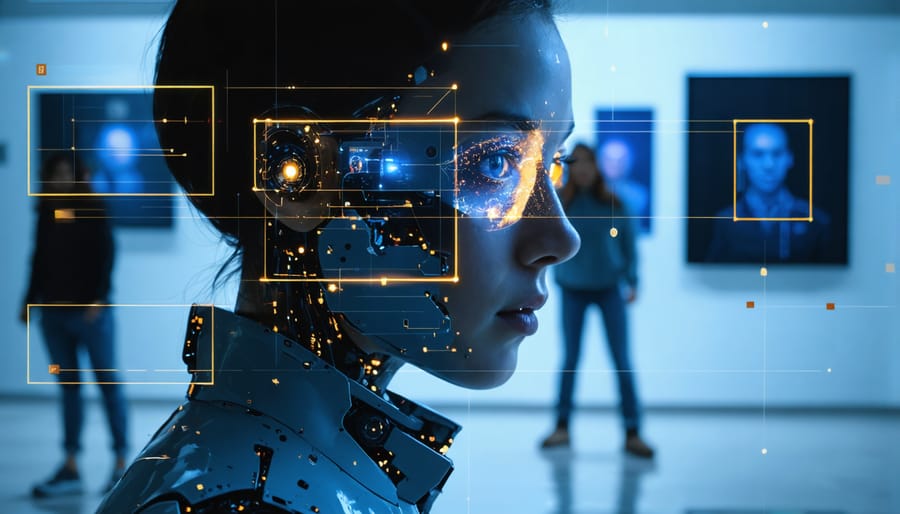
Eye AF and Face Detection
Modern AI-powered cameras have revolutionized the way we capture portraits and action shots through sophisticated Eye AF and Face Detection systems. These features use advanced algorithms to identify and track human faces and eyes in real-time, ensuring your subjects remain perfectly in focus, even when they’re moving.
The system works by scanning the scene and creating a detailed map of facial features, with particular emphasis on the eyes, which are typically where photographers want the sharpest focus. When multiple faces are detected, the camera intelligently prioritizes the nearest subject or the one most central to the frame, though many models now allow you to manually select which face to track.
What makes this technology particularly impressive is its ability to maintain focus even in challenging conditions. Whether your subject is wearing glasses, partially obscured, or moving erratically, the AI continues to track with remarkable accuracy. For wedding photographers, this means never missing those crucial moments during the ceremony, while sports photographers can rely on it to capture athletes’ expressions during intense action.
Recent developments have expanded these capabilities to include animal eye detection, making it invaluable for wildlife and pet photography. Some high-end models can even distinguish between different species, automatically adjusting their tracking behavior accordingly.
The best part? This technology works seamlessly in both still photography and video modes, making it an essential tool for hybrid shooters who need to switch between mediums quickly.
Predictive Focus
One of the most impressive features of AI-powered cameras is their ability to predict and track subject movement with remarkable accuracy. Unlike traditional autofocus systems that react to movement after it occurs, AI predictive focus anticipates where your subject will be moments before they get there.
This predictive capability works by analyzing patterns of movement in real-time. When you’re photographing a bird in flight, for instance, the AI processes countless data points about the bird’s trajectory, speed, and behavior patterns. It then uses this information to calculate where the bird is most likely to be in the next fraction of a second, adjusting focus accordingly.
The system becomes particularly valuable in challenging scenarios like sports photography. Whether you’re capturing a soccer player making an unexpected turn or a race car approaching a curve, the AI continuously learns from the subject’s movement patterns. It can distinguish between intentional movement and random variations, maintaining sharp focus even when subjects change direction suddenly.
What makes this technology truly remarkable is its ability to recognize and track specific subjects. Modern AI systems can identify faces, eyes, and even specific animals, maintaining focus on them even in crowded scenes. For wildlife photographers, this means being able to keep a specific animal in focus as it moves through dense foliage, while portrait photographers can trust the system to maintain perfect focus on their subject’s eyes during dynamic poses.
Real-World Performance and Benefits
Sports and Action Photography
Sports and action photography has been revolutionized by AI-powered focusing systems, offering photographers unprecedented capabilities in capturing fast-moving subjects. Whether you’re shooting a sprint finish at a track meet or following birds in flight, these intelligent systems can predict movement patterns and maintain sharp focus even in unpredictable scenarios.
The technology excels at recognizing and tracking subjects through complex movements, like a basketball player weaving through defenders or a motorcyclist navigating a challenging course. What’s particularly impressive is how the AI adapts in real-time, maintaining focus even when subjects temporarily disappear behind obstacles or change direction suddenly.
For sports photographers, this means significantly higher keeper rates – those perfect shots where the athlete’s expression is crystal clear despite moving at high speed. The system’s ability to detect and track specific body parts, such as a runner’s face or a footballer’s torso, ensures crucial moments aren’t lost to focus hunting.
Wildlife photographers benefit equally, as the AI can lock onto animals performing rapid movements, like birds taking flight or predators pursuing prey. The technology’s quick response time and predictive capabilities mean you can focus more on composition and timing rather than struggling with manual focus adjustments.
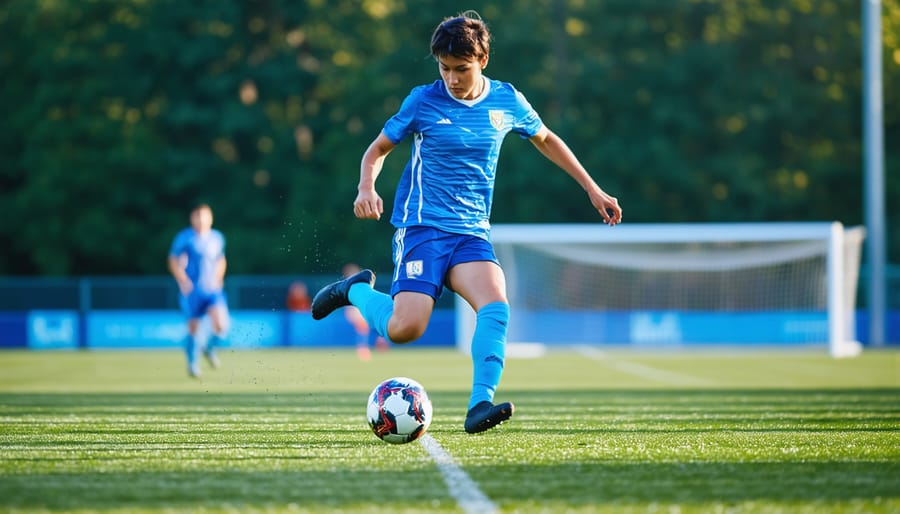
Portrait Photography
AI-powered cameras have revolutionized portrait photography, making it easier than ever to capture stunning shots of individuals and groups. The system’s ability to detect and track faces means you’ll rarely miss focus on your subject’s eyes – traditionally the most crucial element of a portrait shot.
When photographing individuals, these smart cameras can recognize facial features and expressions in real-time, automatically adjusting settings to capture the most flattering moments. The AI analyzes multiple aspects simultaneously, from skin tones to facial expressions, ensuring optimal exposure and focus even in challenging lighting conditions.
Group portraits, which have always been technically demanding, become significantly more manageable with AI assistance. The system can track multiple faces simultaneously, ensuring everyone in the frame is in sharp focus. It can even detect when someone blinks or turns away, helping you capture that perfect moment when everyone looks their best.
For wedding and event photographers, this technology is particularly valuable. The camera can rapidly switch between faces in dynamic situations, maintaining focus as people move and interact. It can also prioritize certain faces in the frame, ensuring the bride and groom, for example, remain the primary focus in wedding shots.
The technology also excels in capturing candid portraits, where traditional autofocus systems might struggle to keep up with natural movements and expressions. This makes it ideal for documentary-style photography and lifestyle shoots where spontaneity is key.
Wildlife Photography
AI-powered cameras have revolutionized wildlife photography, making it possible to capture moments that were once nearly impossible to shoot. These smart systems excel at tracking fast-moving animals, maintaining focus even when subjects dart behind obstacles, and operating in challenging lighting conditions.
The technology particularly shines during dawn and dusk – prime times for wildlife activity but traditionally difficult for photographers. AI systems can detect and track animals in low-light situations, helping photographers nail those ethereal golden-hour shots of deer emerging from morning mist or owls beginning their evening hunt.
Perhaps most impressively, modern AI cameras can recognize specific animal species and their behaviors. Whether it’s birds in flight, big cats on the prowl, or marine life breaking the surface, the camera can anticipate movement patterns and adjust settings accordingly. This predictive capability means photographers spend less time fiddling with settings and more time composing their shots.
The technology also proves invaluable in dense forest environments where traditional autofocus systems struggle. AI can distinguish between foreground foliage and target subjects, maintaining focus on animals partially obscured by branches or leaves. For wildlife photographers working in remote locations with fleeting shooting opportunities, this reliability can mean the difference between capturing or missing that once-in-a-lifetime shot.
These advances have democratized wildlife photography, allowing enthusiasts to achieve results that previously required years of experience and specialized techniques.

Current Limitations and Future Developments
While AI-powered camera systems have made remarkable strides, they still face several notable challenges. Current systems sometimes struggle in extreme low-light conditions or with fast-moving subjects in complex backgrounds. Even the most advanced AI autofocus can occasionally misinterpret scenes, especially when multiple subjects compete for attention or when dealing with reflective surfaces.
One significant limitation is the processing power required for real-time AI operations. This demands more battery consumption and can lead to camera heating issues during extended use. Additionally, while lens quality plays a crucial role in autofocus performance, not all legacy lenses are optimized for AI-powered systems, potentially limiting their effectiveness.
However, the future looks promising. Manufacturers are developing more efficient AI chips that consume less power while delivering faster performance. We’re seeing early developments in quantum computing applications that could revolutionize how cameras process complex scenes. Machine learning models are becoming more sophisticated, with some systems now capable of learning from their mistakes and adapting to individual photographers’ shooting styles.
Another exciting development is the integration of advanced depth-sensing technologies. Future cameras may combine traditional phase-detection autofocus with sophisticated 3D mapping capabilities, enabling more precise subject tracking and improved performance in challenging conditions.
We’re also seeing progress in edge computing solutions that could allow cameras to process complex AI operations without relying heavily on internal processing power. This could lead to smaller, more efficient cameras without compromising on AI capabilities.
The industry is actively addressing privacy concerns too, with manufacturers developing more transparent AI systems that give photographers greater control over how their cameras collect and use data. These improvements, combined with ongoing advances in sensor technology and processing algorithms, suggest that the next generation of AI-powered cameras will offer even more impressive capabilities while addressing current limitations.
As we’ve explored throughout this article, AI-powered autofocus represents a revolutionary leap forward in photography technology. By combining advanced machine learning algorithms with traditional focusing systems, cameras can now track subjects with unprecedented accuracy and intelligence, fundamentally changing how photographers approach their craft.
The impact of AI autofocus extends far beyond simple technical improvements. Wildlife photographers can now capture split-second moments with remarkable precision, while wedding photographers can trust their cameras to maintain focus during crucial moments. Sports photographers benefit from lightning-fast subject recognition and tracking, while portrait photographers can rely on precise eye-detection even in challenging lighting conditions.
Looking ahead, AI autofocus technology continues to evolve at a rapid pace. We’re seeing increasingly sophisticated subject recognition capabilities, improved performance in low-light conditions, and more intuitive user interfaces. As computational photography advances, we can expect even more impressive features, such as predictive focusing that anticipates subject movement and multi-point tracking that handles complex scenes with ease.
For photographers, this technological evolution means more time focusing on composition and creativity, rather than wrestling with technical challenges. While some traditionalists may view AI assistance with skepticism, the reality is that these tools are enabling photographers to push creative boundaries while maintaining technical excellence.
As cameras become smarter and more capable, AI autofocus will undoubtedly play a central role in shaping the future of photography, making advanced techniques more accessible to enthusiasts while providing professionals with powerful tools to achieve their creative vision.

